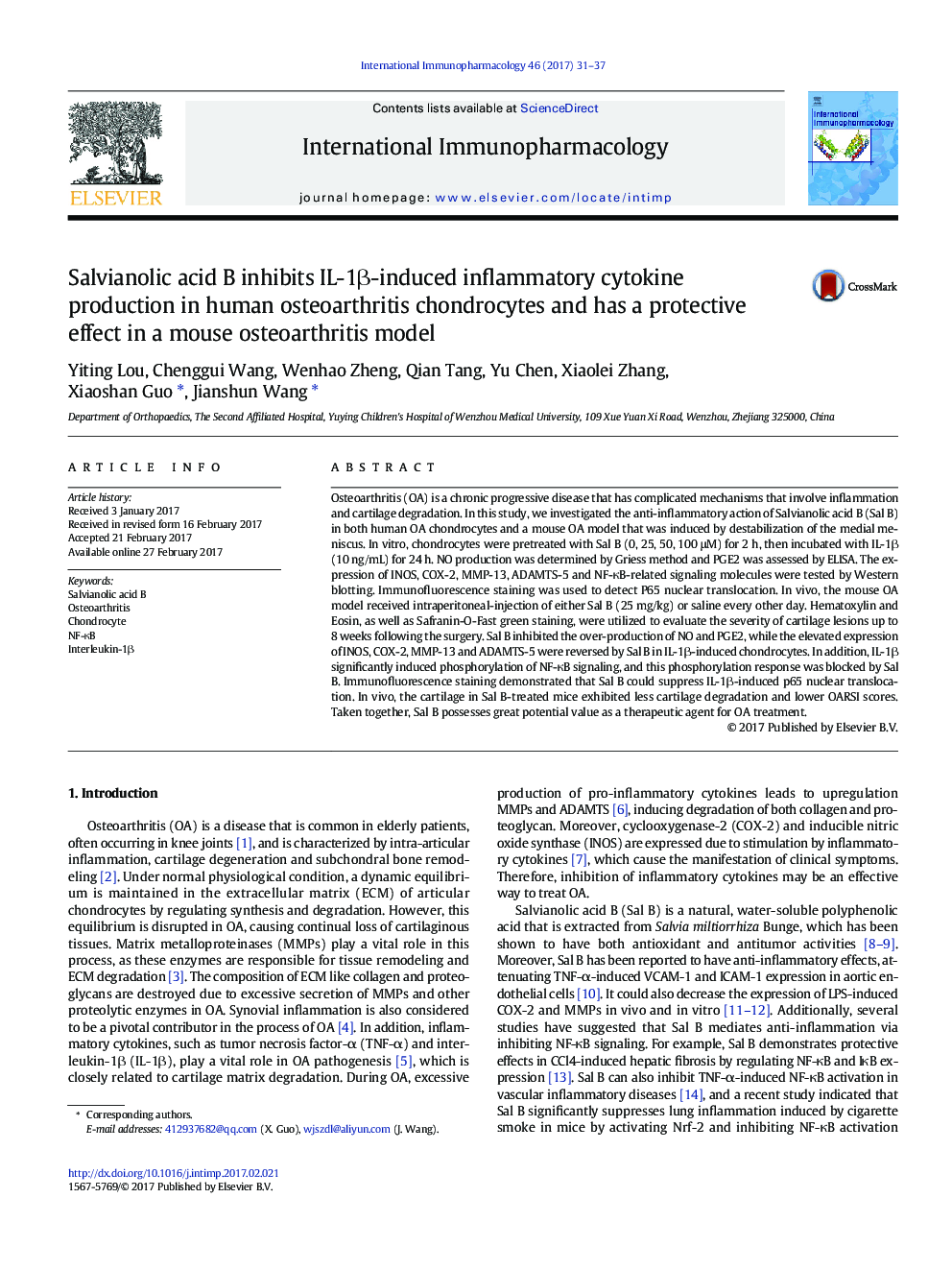| Article ID | Journal | Published Year | Pages | File Type |
|---|---|---|---|---|
| 5555559 | International Immunopharmacology | 2017 | 7 Pages |
â¢Salvianolic acid B inhibits IL-1β-induced inflammatory cytokine production.â¢Salvianolic acid B can suppress activation of NF-κB signaling.â¢Salvianolic acid B decreases cartilage degradation in a mouse OA model.â¢Salvianolic acid B may be a potential agent in treating and preventing OA.
Osteoarthritis (OA) is a chronic progressive disease that has complicated mechanisms that involve inflammation and cartilage degradation. In this study, we investigated the anti-inflammatory action of Salvianolic acid B (Sal B) in both human OA chondrocytes and a mouse OA model that was induced by destabilization of the medial meniscus. In vitro, chondrocytes were pretreated with Sal B (0, 25, 50, 100 μM) for 2 h, then incubated with IL-1β (10 ng/mL) for 24 h. NO production was determined by Griess method and PGE2 was assessed by ELISA. The expression of INOS, COX-2, MMP-13, ADAMTS-5 and NF-κB-related signaling molecules were tested by Western blotting. Immunofluorescence staining was used to detect P65 nuclear translocation. In vivo, the mouse OA model received intraperitoneal-injection of either Sal B (25 mg/kg) or saline every other day. Hematoxylin and Eosin, as well as Safranin-O-Fast green staining, were utilized to evaluate the severity of cartilage lesions up to 8 weeks following the surgery. Sal B inhibited the over-production of NO and PGE2, while the elevated expression of INOS, COX-2, MMP-13 and ADAMTS-5 were reversed by Sal B in IL-1β-induced chondrocytes. In addition, IL-1β significantly induced phosphorylation of NF-κB signaling, and this phosphorylation response was blocked by Sal B. Immunofluorescence staining demonstrated that Sal B could suppress IL-1β-induced p65 nuclear translocation. In vivo, the cartilage in Sal B-treated mice exhibited less cartilage degradation and lower OARSI scores. Taken together, Sal B possesses great potential value as a therapeutic agent for OA treatment.
